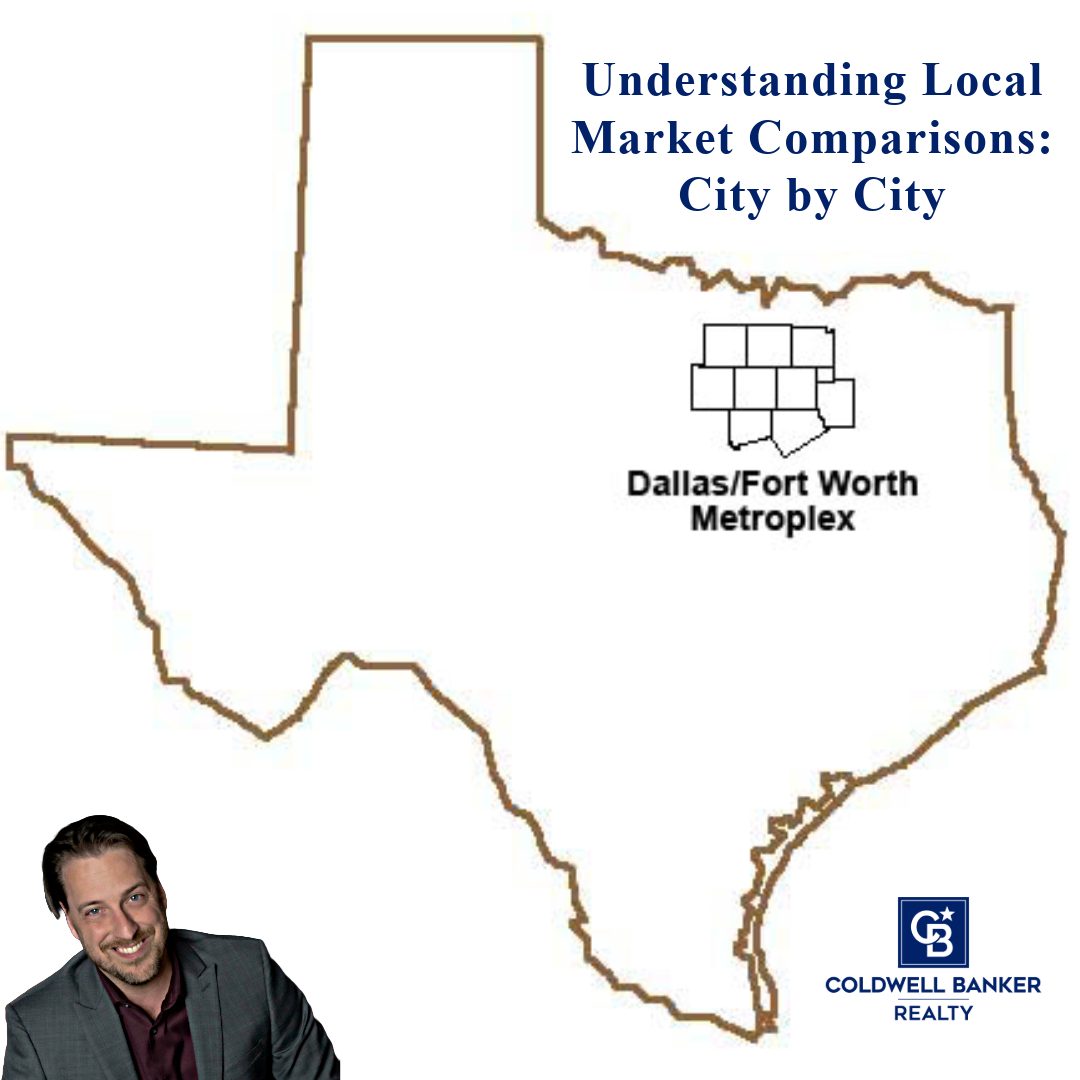DFW is not one market—it’s dozens of overlapping markets. City, school district, local amenities, and even infrastructure (roads, traffic, commute times) heavily affect values. Comparing markets city by city helps you understand what you’re getting for your money, where appreciation has been strongest, and where there may be more risk or opportunity.
What Factors Explain the Differences
Here are the primary drivers causing the variations from city to city in DFW:
-
Schools / School Districts
Many buyers (especially families) are willing to pay a premium just for top school districts. Frisco ISD, for example, gets high marks. Those school district lines often define where high price growth happens. -
New vs Older Construction
Cities with lots of newer subdivisions, modern amenities, and well-planned infrastructure tend to have higher prices and more consistent growth (less “problem” houses). They also often have better roads, utilities, planned parks, etc. -
Distance / Commute to Job Centers
Proximity to major employment hubs, highways, toll roads, and traffic patterns strongly matter. A home 30 to 45 minutes from central Dallas (or other major job clusters) is going to be valued differently than one 60+ minutes away. -
Amenities & Community Services
Things like availability of retail, parks, nightlife, cultural attractions, walkability, public transit (where available), etc., all feed into buyer demand and thus prices. -
Inventory, Supply, & Land Availability
Suburbs which can keep building (because there’s available land) tend to expand supply, which can moderate price growth. Cities more “built-out” hit supply constraints, which pushes up values. -
Local Economic & Job Growth
Cities which are growing with employers, increasing population, good infrastructure investments tend to have better appreciation and stronger markets. For instance, McKinney, Allen, Frisco have been frequent high performers in various “best real estate market” rankings. -
Interest Rates / Mortgage Rate Environment & Overall Market Cycle
Because DFW is growing fast, it tends to respond strongly to rate shifts. When mortgage rates are low, demand surges; when rates rise, buyers get more picky. The cities with more affluent buyers often see less drop from rate rises, but less affluent suburbs feel pinch more strongly.
Recent Trends & Market Shifts (2025) City by City
From recent reports (2025), some trends are emerging:
-
Inventory has risen across most DFW cities, shifting many areas toward balanced or buyer’s market conditions.
-
Many cities are seeing year-over-year price declines in certain segments (starter and mid-tier homes) while luxury/high-end segments are more resilient.
-
In some top-end suburbs (Frisco, parts of Plano) growth is slowing, but the premium remains. For lower cost suburbs, affordability is more of a driver—and buyers are more sensitive to condition, updates, and price.
What This Means for Buyers, Sellers, and Investors
Here are the practical take-aways when you compare city markets in DFW:
-
For Buyers
-
If budget is tight, the more affordable suburbs (e.g. Mesquite, Garland, parts of Fort Worth) may offer more bang for buck, but you’ll want to carefully evaluate school districts, commute, and maintenance needs.
-
If you prioritize appreciation, buying in top-school districts and growing suburbs (Frisco, Allen, McKinney, etc.) may cost more up front, but historically those areas have had stronger value retention.
-
-
For Sellers
-
If you’re in a high-demand suburb, pricing aggressively with good presentation often works well. Buyers expect quality.
-
In moderate or lower cost cities, investing in home improvements (especially cosmetic, kitchens, baths, landscaping) can have larger percentage returns.
-
Timing matters: markets in top suburbs may respond faster to interest-rate drops or buyer sentiment than more affordable suburbs.
-
-
For Investors / Flippers
-
Watch the mid-tier markets: as rates rise, there’s often more stock in these places and more opportunity for discounted purchases.
-
But also risk: buyer demand can be more volatile in those classes.
-
How to Use City Comparisons for Your Decision Making
Here are some questions to ask / steps to take when comparing city markets in DFW, whether you’re buying, selling, or investing:
-
Get recent comp data for the exact city (and preferably the neighborhood). Don’t just look at “Frisco average,” look at homes similar in size, age, features.
-
Look at inventory: how many similar homes are for sale? What are their days on market? Are many selling below list? That tells you how much negotiation power there is.
-
Evaluate growth prospects: planned infrastructure (roads, transit), upcoming schools, upcoming commercial developments, jobs moving in.
-
Factor in carrying costs: property taxes, insurance, maintenance, any HOA dues. Sometimes a lower purchase price city is offset by higher long-term costs.
-
Personal priorities vs pure appreciation: If you value commute time, amenities, schools more than just return on investment, some cities may be worth the premium.
Conclusion
City-by-city comparisons in DFW reveal that:
-
There is a wide spread in median home prices among cities, even within the same suburbs (sometimes $200,000+ differences).
-
High-growth, well-amenitized suburbs (Frisco, Flower Mound, Plano, McKinney, Allen) tend to command big premiums, especially for newer homes and great schools.
-
More affordable options (Denton, some parts of Fort Worth, Garland, Mesquite) offer value but come with trade-offs (older homes, longer commutes, variable schools).
-
The market in 2025 is shifting: more inventory, slower price growth, more negotiation room—this is affecting all cities, though higher-demand ones are holding up slightly better.


 Facebook
Facebook
 X
X
 Pinterest
Pinterest
 Copy Link
Copy Link
